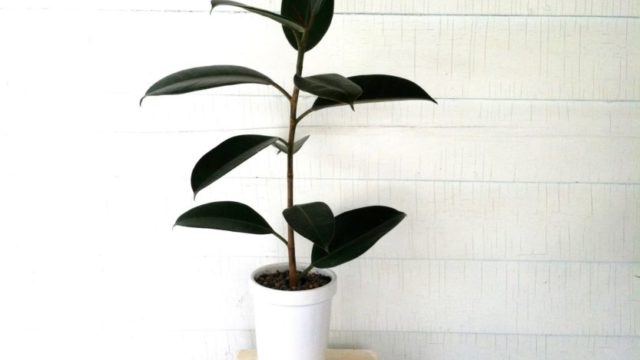
Since my blog is about pet safe plants, I wanted to take a moment and talk about the lovely Rubber tree, Ficus elastica.
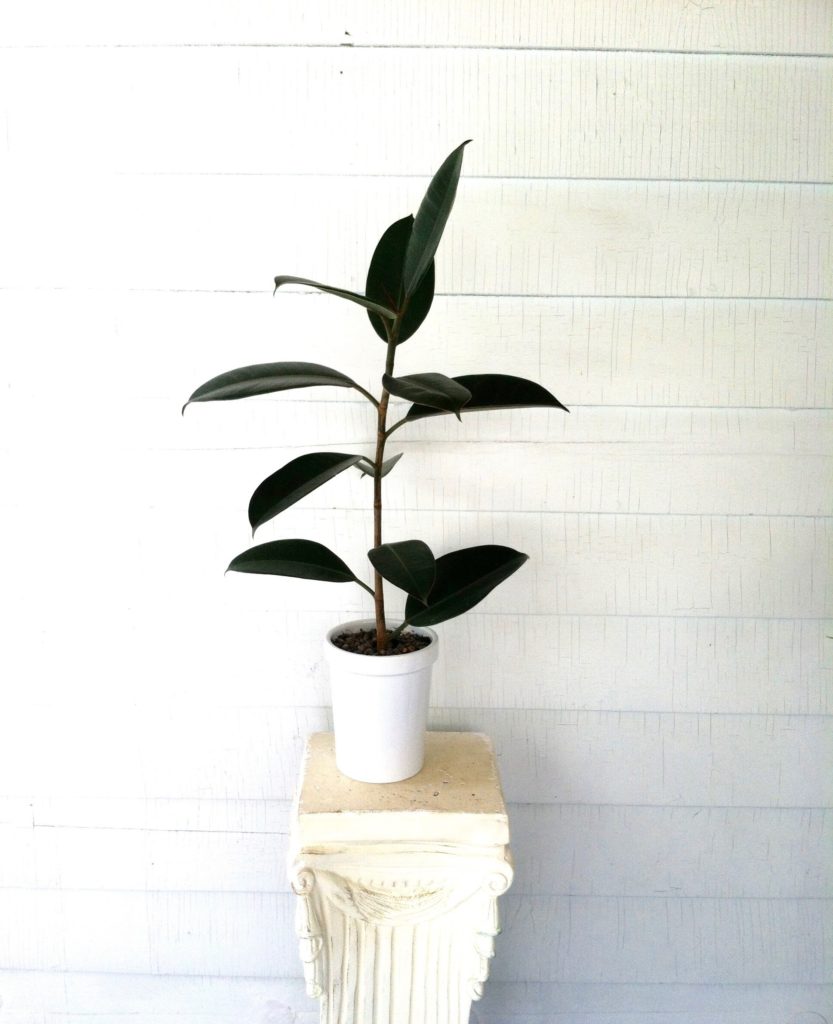
I always have at least one of my four Rubber trees in my photos. Although not 100% pet safe, Rubber trees have become one of my favorite houseplants. My cats won’t touch or eat them at all, which is why I began to take a liking to them. Plus, they are somewhat easy to take care of, purify the air, and are so unique – especially their giant fleshy leaves and pink underbelly. My biggest Rubber tree is Rudy, who has had quite the growth spurt the last year reaching over 5′ tall. :-O
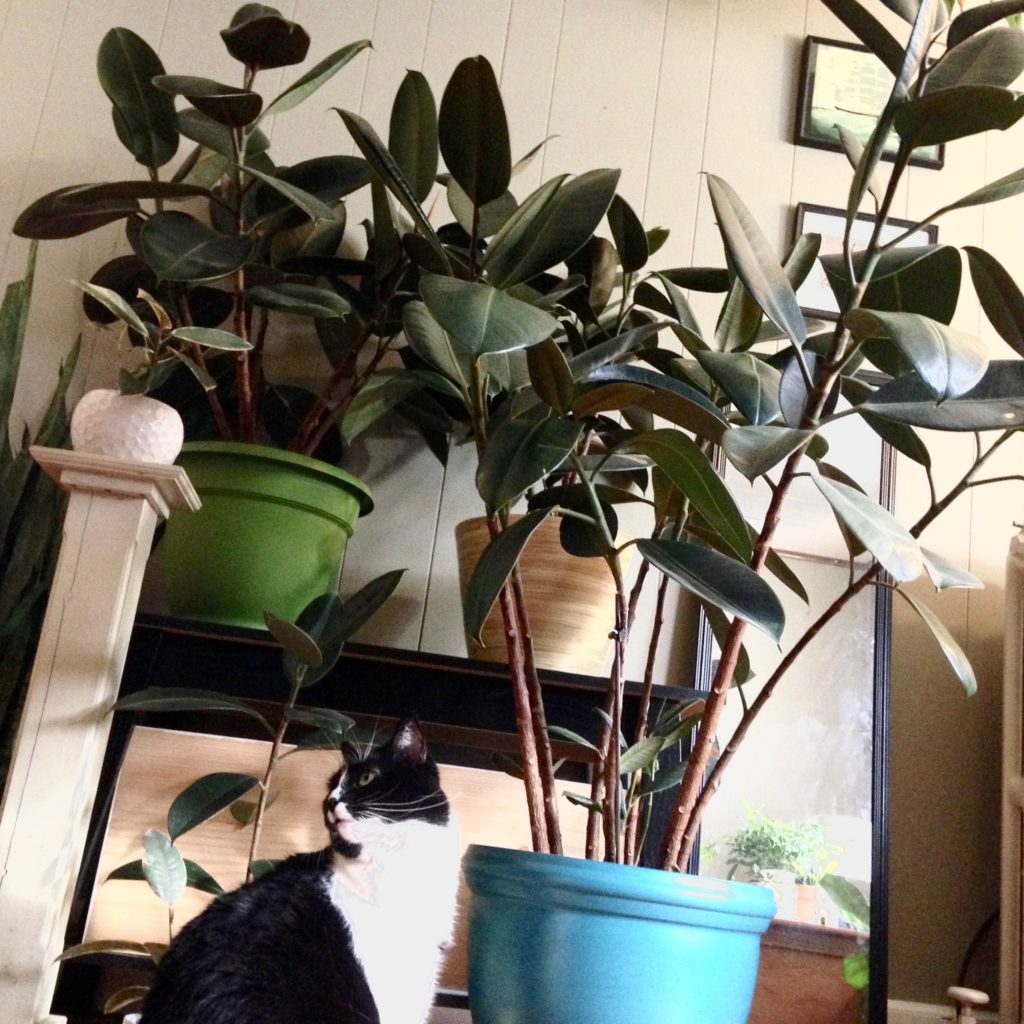
Are Rubber Trees Safe for Pets?
I mention they aren’t totally pet safe – well, here’s why. If you own one of these, you may have already encountered the unpleasant milky liquid that comes out of the leaf if punctured or taken off. This is partially why it’s called a Rubber tree – that sap sticks to you and dries like rubber. Naturally if a cat or dog take a nibble of a leaf, they would have quite a bit of oral discomfort. They are labeled unsafe for pets and children for that reason.
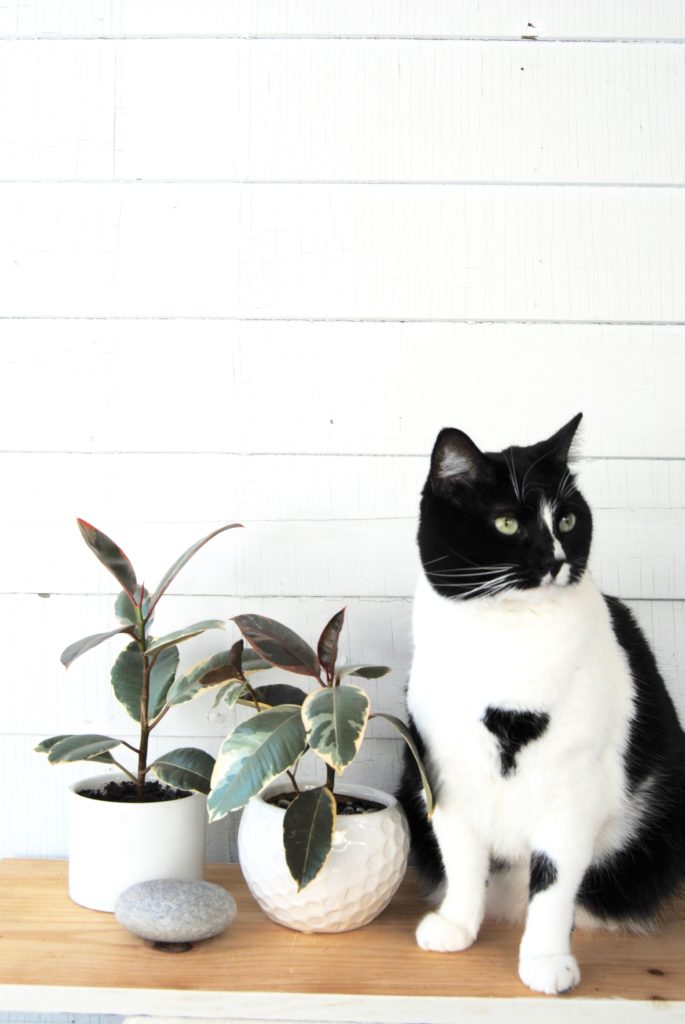
Nibbling is highly unlikely primarily because they don’t actually look like leaves. My cats have no interest in eating something tough, plastic-y, and awful tasting, but I can’t speak for sadist cats.
A pet safe relative to the Ficus elastica is Peperomia (below), which is safe for cats and dogs. They’re smaller and sometimes called “american rubber plant” or “baby rubber plant.” A toxic member of the ficus family is the Ficus benjamina, which can sometimes go by “Indian rubber plant.” It really looks nothing like a rubber tree at all. This variety is much more toxic, so I avoid this type of ficus altogether.
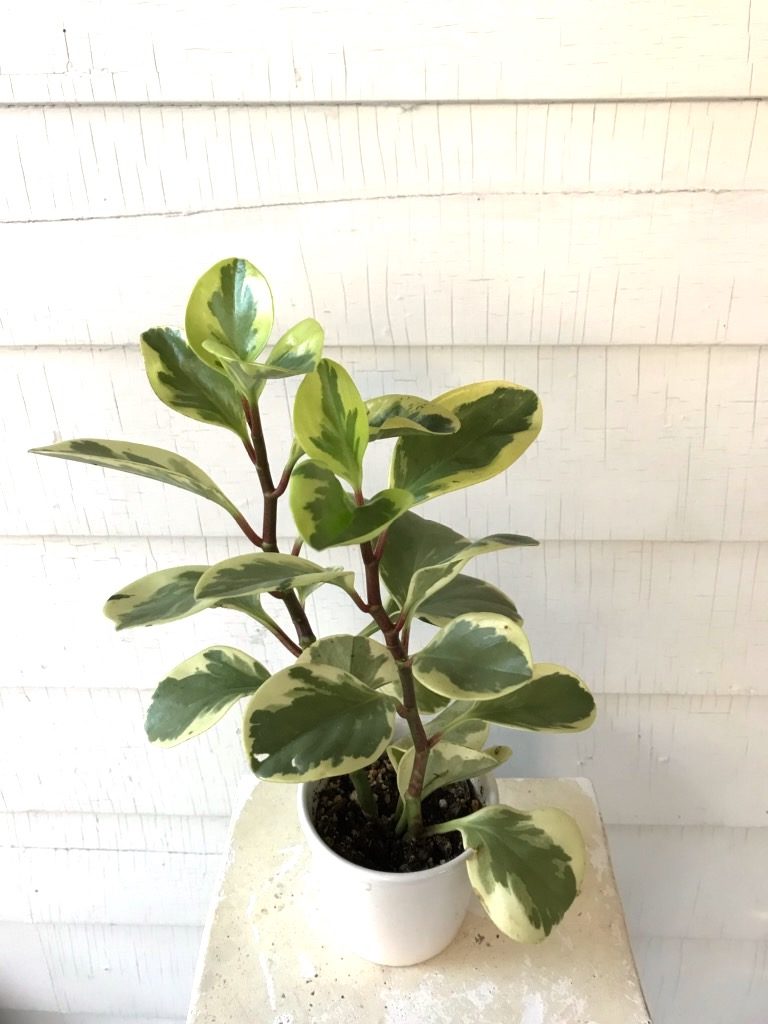
If you are looking to add a rubber tree to your collection but have cats, check the label to make sure it is either a Ficus elastica or a peperomia. Take it home, monitor your pets for any interest, and you’ll know if you can buy 10 more next week.
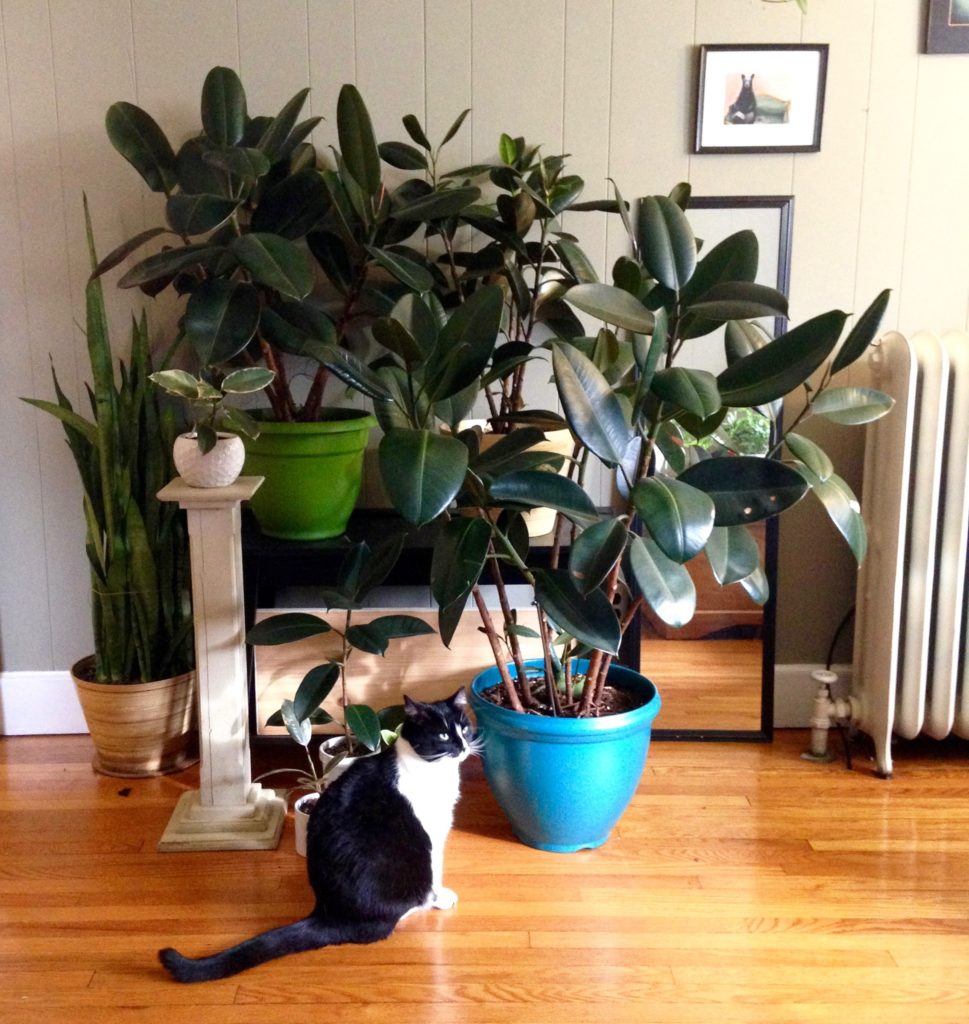
Caring for Rubber Trees
Ficus elastica, which is what Rudy is, is considered the most common type of Rubber tree. The variegated Ficus tineke (pictured below) is a really pretty rubber tree in the Ficus family – their leaves start out pink with painted green and they turn mostly green and white once they fully open. Be still my heart.
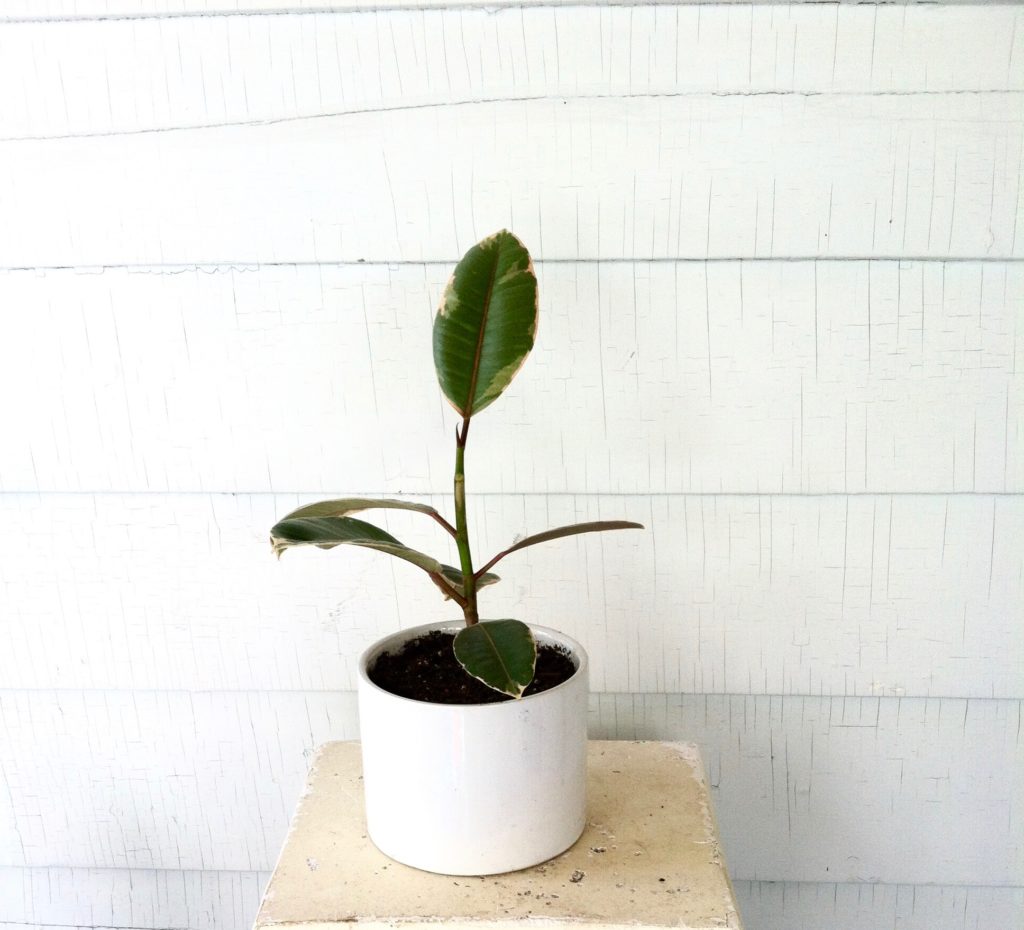
As far as care, Rubber trees are pretty simple:
Sunlight: Bright, indirect light. Some say these guys like medium light, but they just grow better and are happier in bright light. Rudy and Co. see 6+ hours of sun a day.
Watering: Knowing when to water is difficult, but the brighter location your tree is in, the more you’ll need to water. Rubber trees like to be very dry before you water. Overwatering is common, and they’ll tell you they’re unhappy with yellow leaves.
Humidity: I find my Rudy is much less of a stickler about humidity than say, my Monsteras. I personally don’t think they need an extra humidifier or anything.
Rubber trees grow pretty quickly and you may need to trip them at some point. Don’t worry – I made a whole blog post about Rubber tree propagation so you can grow your Rubber tree collection, one little Rubber tree at a time.
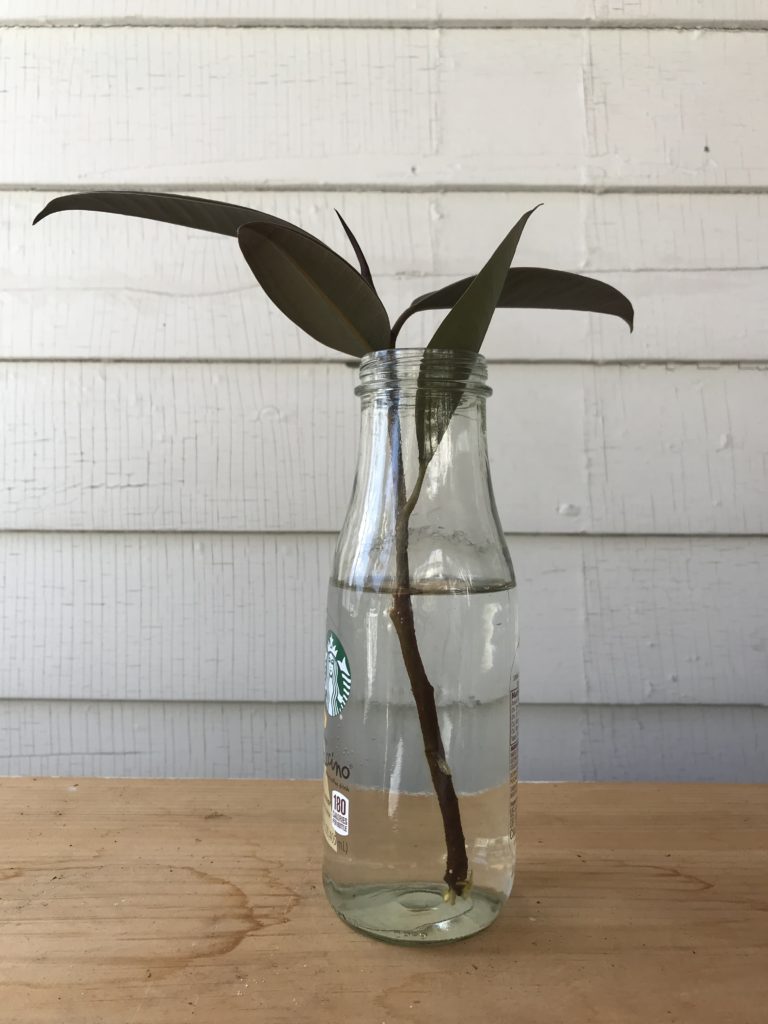
Have a favorite type of ficus or rubber tree? Leave a comment below!

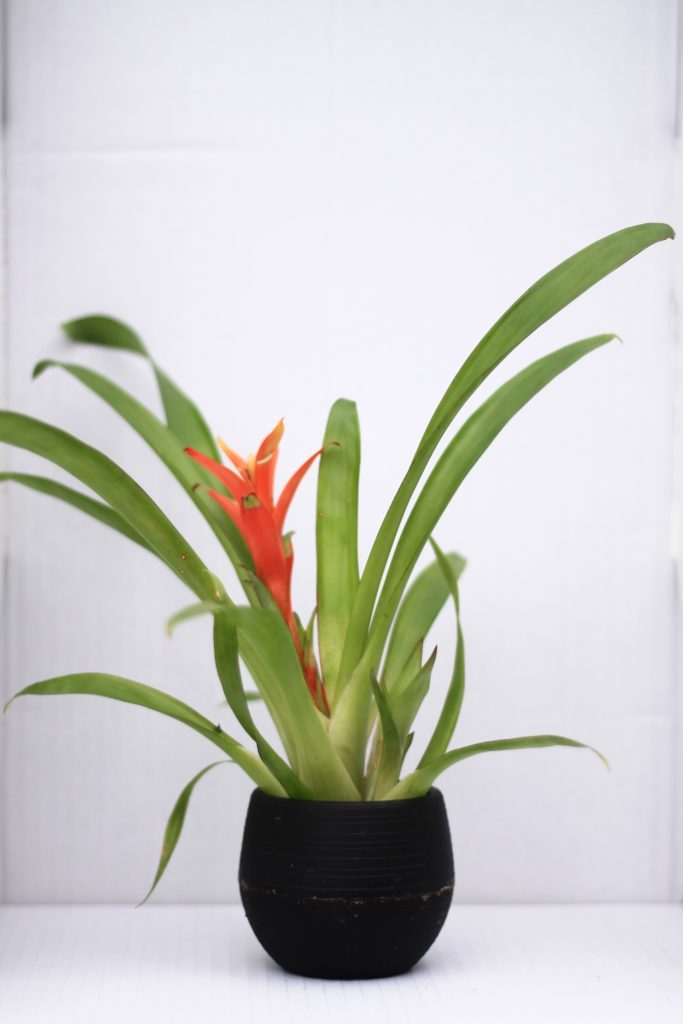
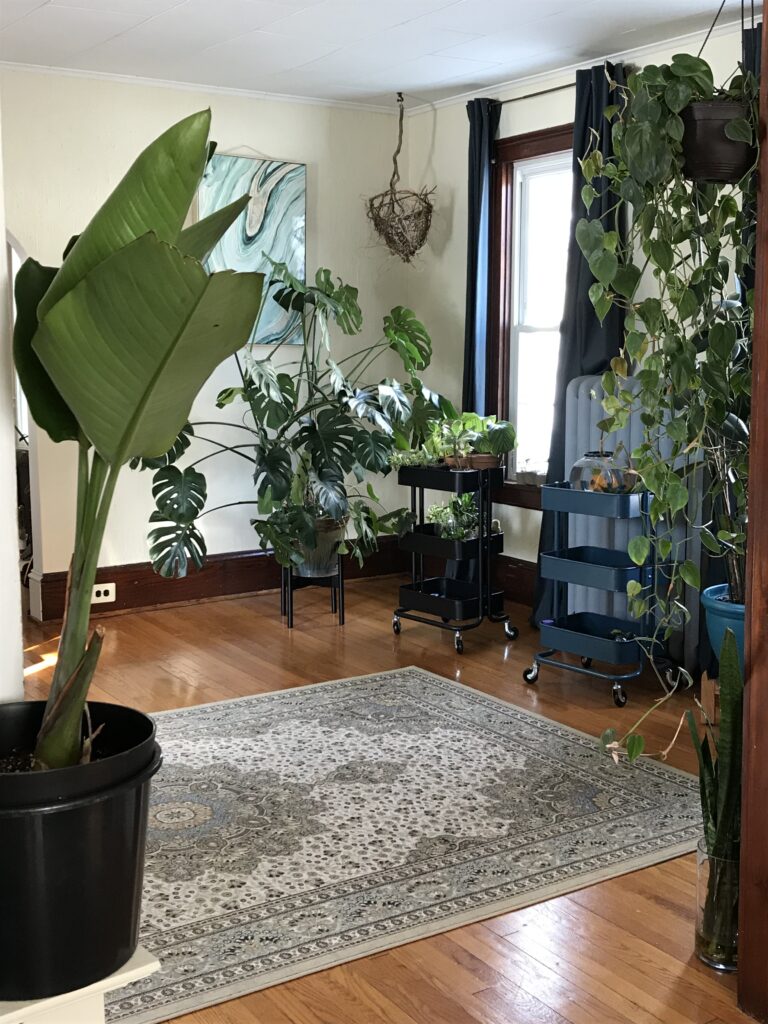
I’ve always wanted a rubber tree!
Do you have any experience with a ZZ plant? I recently acquired one but have read that they are toxic to cats. Their leaves are not grass-like at all, so I think my cats would avoid them, kind of like yours do with the rubber tree. What do you think?
Hi Kristen! I have a ZZ plant at work only and no longer in my home as they are toxic and my cats liked it a bit too much. I would suggest trying it out and monitoring your cats with the plant and see what happens. Because ZZs are a bit more toxic than Rubber trees, I would be a bit extra cautious. If you see any issues, I’d move it to a tall shelf out of paws reach.
This was so helpful! This plant isn’t listed on the ASPCA website and I’m the same way.. more of a “let’s buy it and see if the cat wants to eat it” kinda plant curator. So far my critter’s fave snack is the spider plant and palms (majesty and ponytail). She only seems concerned with grassy, stringy plants and even though pothos and monstera are technically poisonous, she has 0 interest in them. Feeling confident about trying a rubber plant! The pink variegated ones are swoon-worthy! Thanks for sharing your experience
Glad I can help Tabitha! Cats definitely seem to like stringy plants the best, but I know a lot of pet owners like us who have rubber trees who were concerned. I have never had any issues with large leave plants and my cats but my spider plant is another story….
very useful info.. thank you
Hello, im glad i came across your article/blog on this ficus.
I just bought another ficus. A variegated one (white n green). One question, would they turn to red-ish if exposed to sunlight so much naturally or thats a different kind altogether ?
Thank you in advance 😉
Hi Ali – The leaves start out pink when they are just unfolding and eventually turn green/white. There is a “more crimson” variety of ficus tineke where the leaves stay slightly pink called a Ficus tineke ruby, but I believe you just have the plain var. ficus tineke. I talk more about them here.
I love love this blog !! We just adopted a kitten 2 months Ago and it turned my entire plant collection upside down mostly with his fascination for the soil and digging . I put rock pebbles which he hadn’t tried eating and it’s a deterrent to dig . I have 2 gorgeous Pothos In stand up kind and a huge rubber tree and ZZ ?? basically death trap . He’s nibbled very little of the ZZ and moved on , same with Pothos and only jumps into pot , plays n leaves . All the info here and comments from others are really really helpful !!
Kittens are tough! They really want to get into everything, but I’m glad I can help!
I use heavy glass/stick bottle diffusers with a mint/lavender combo of essential oils half way full in the bottles. My cats cant stand the scent I have them in front and back of my plants. Both my one yr old cats stay away. If every once and while they want to do some digging a drip a very tiny amount on the inside top lip of the planter and they get the message. Lol, just a few drops allowed to drip from the inside of the rim of planter.
I also confine my cats with tempting treats to one plantless room when I am not home.
I think I must be the unluckiest cat owner ever hahah. A ruby ficus was among my first indoor plant attempts… aaaaand yep sure enough my cat is the weirdo who won’t leave it alone. He’s such a plant fanatic. I’ve accepted that I can only keep completely non-toxic plants in the house because he chows down. I moved the ficus out to my porch and it seems to love it there. Thank goodness too because I really needed it to grow a bunch of new leaves so I could remove the ones with scars of cat nibbles haha. Thank you for this post though – just discovered your page and this is all very helpful
Love this post! Very useful, especially about the watering. I have a Tineke (it arrived 2 weeks ago) and I’m struggling a litte bit because it was sooo wet (not moist, absolutely WET) so I transplanted it to new soil and I watered it just a little bit, so I hope it will be ok soon (winter is coming so I’m also nervous about that, first winter in charge of plants: one Tineke, one Monstera Deliciosa, two golden pothos and a Sansevieria).
Regards from Chile!